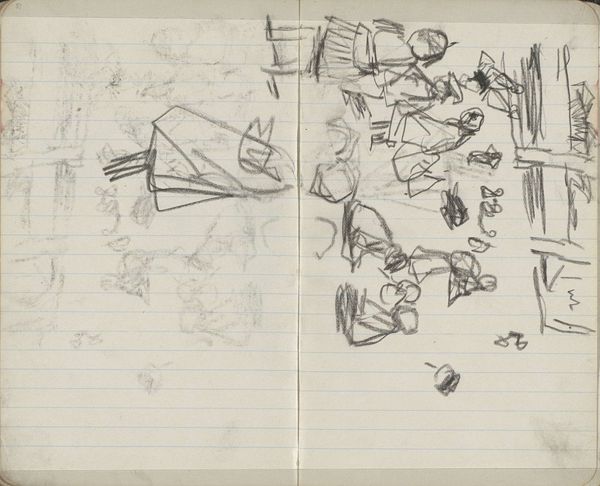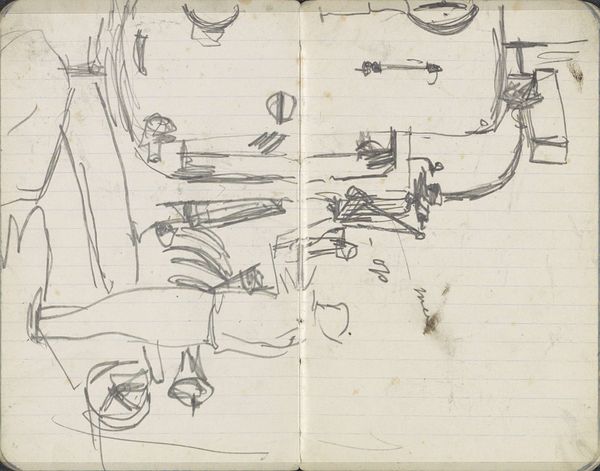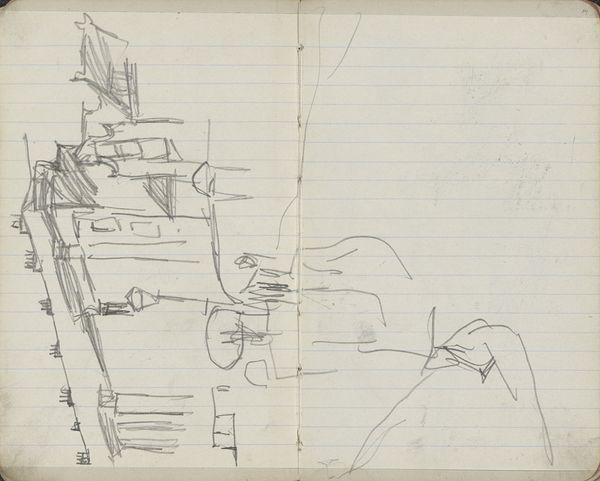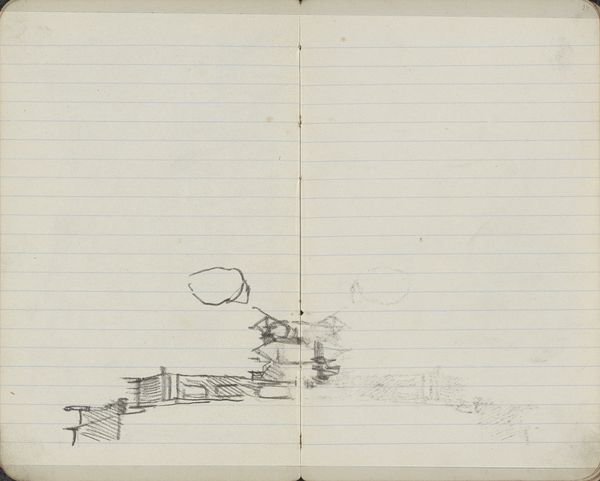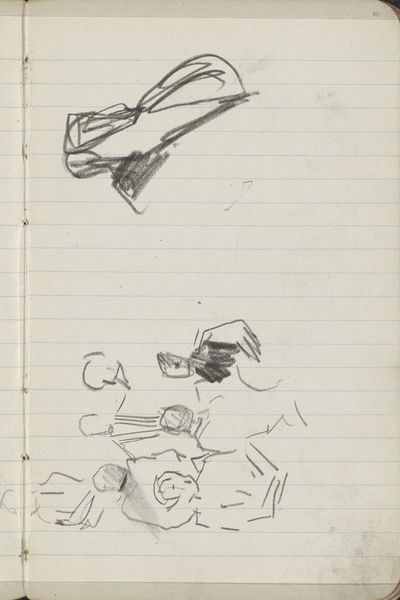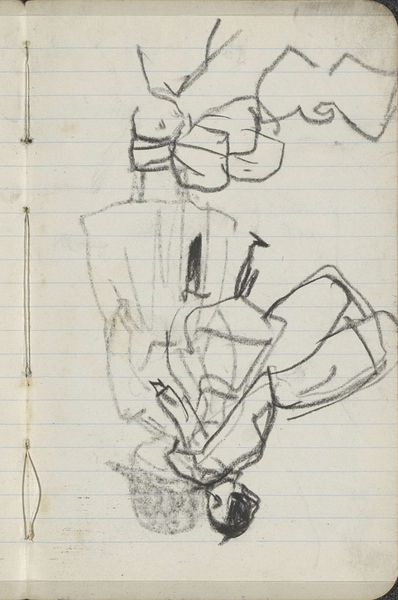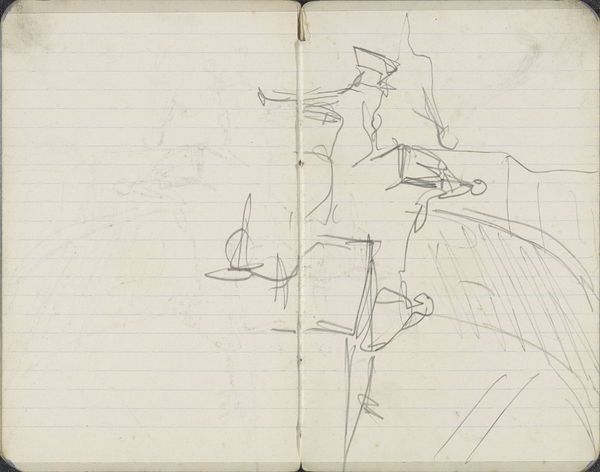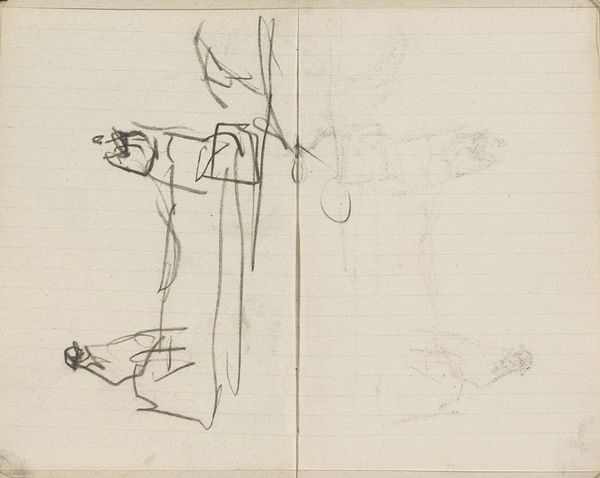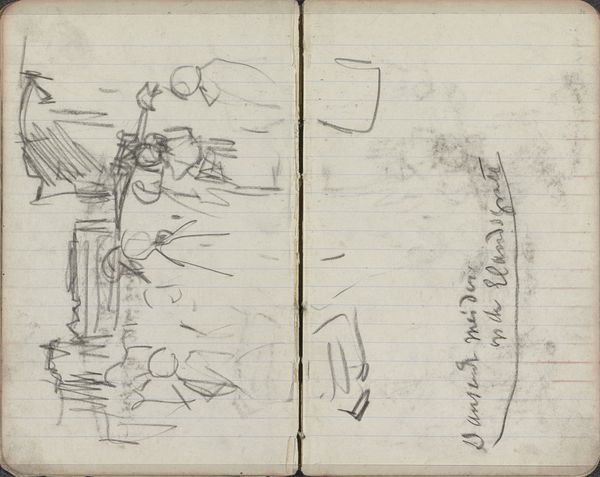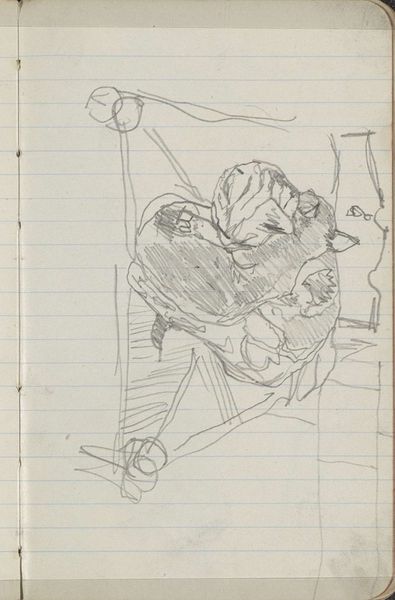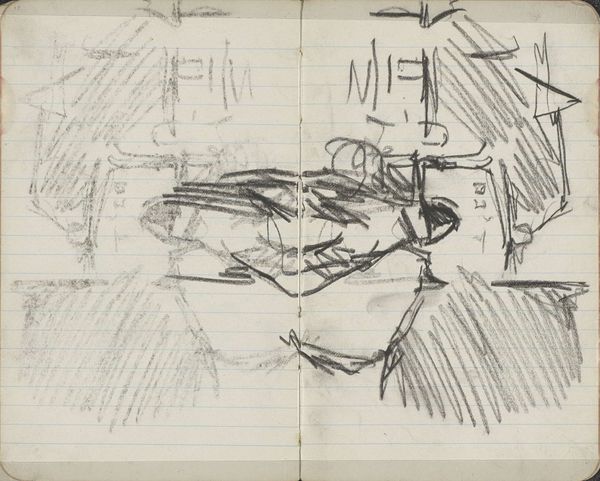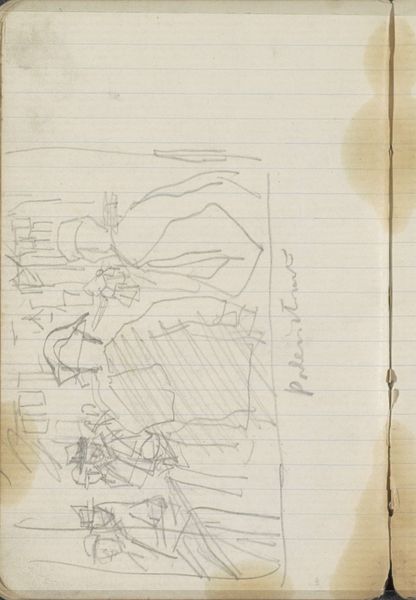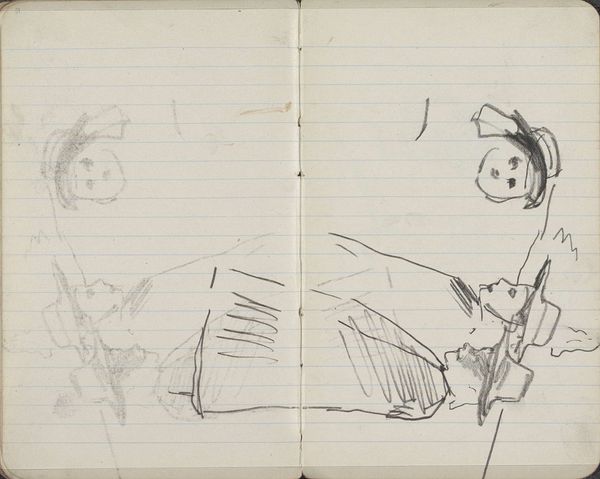
drawing, pencil
#
drawing
#
quirky sketch
#
sketch book
#
hand drawn type
#
landscape
#
personal sketchbook
#
idea generation sketch
#
sketchwork
#
sketch
#
pen-ink sketch
#
pencil
#
sketchbook drawing
#
storyboard and sketchbook work
#
sketchbook art
#
realism
Copyright: Rijks Museum: Open Domain
Editor: So this is "Figuren bij karren," or "Figures with Carts," by George Hendrik Breitner, from around 1890 to 1900. It's a pencil drawing, seemingly on lined paper from a notebook. I’m struck by how informal and fleeting it feels, almost like a glimpse into the artist's thought process. What's your take on this sketch? Curator: It's interesting you say "fleeting." This resonates with Breitner's engagement with capturing the ephemeral nature of urban life and labor. Consider the period: late 19th-century Amsterdam, undergoing rapid industrialization. Carts were vital for commerce, yet also a sign of grueling manual labor, frequently performed by women. What does that tell us? Editor: Well, the figures are not really defined but seem to represent common laborers, which reflects daily reality for a large segment of the population in Amsterdam at the time, far removed from the art world? Curator: Precisely! Breitner was part of a movement reacting against romanticized depictions of peasant life. He situated himself within the lived experiences of the urban working class. His sketches of working women challenged the existing societal power structures and highlighted the struggles of marginalized communities within the urban landscape. Notice, too, how the lined paper itself flattens the representational depth, as though subtly evoking labor's relentless constraints. What possibilities emerge if we interpret the sketch, not just as a preparatory study, but as a powerful reflection of its own socio-economic conditions? Editor: So, the medium itself becomes part of the message! Seeing it as a statement about the value—or lack thereof—placed on certain types of labor really changes my perspective. Curator: Indeed. By choosing such an ordinary, accessible medium, Breitner democratizes the very act of witnessing, compelling us to rethink what we value, and whom we acknowledge. Editor: That gives me a lot to think about – looking at the socioeconomic conditions of Amsterdam in the 1890’s in how we interpret this work makes perfect sense. Curator: Exactly. Art is so much more when you look at it in the context of its culture and people.
Comments
No comments
Be the first to comment and join the conversation on the ultimate creative platform.
